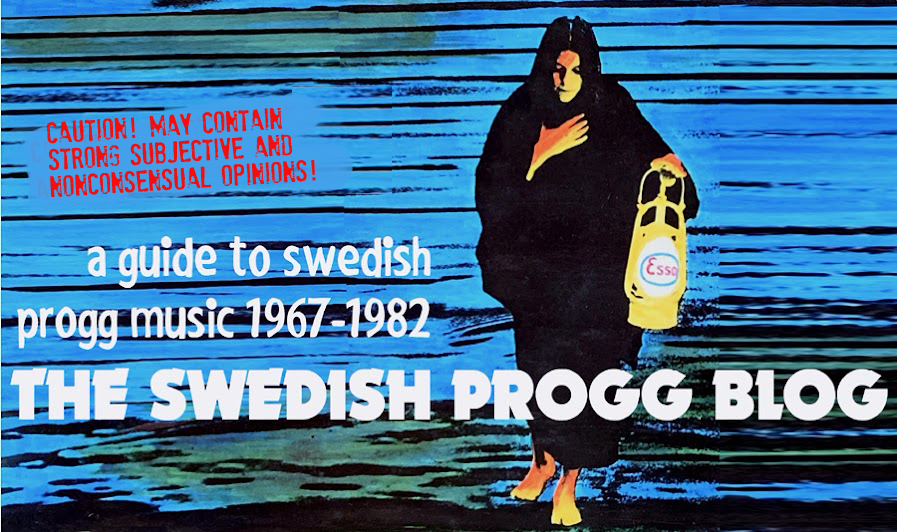Vocals in various languages
International relevance: ***
Ranked #12 on the blog's Top 25 list
A highly intriguing album, from the
music itself right down to the cover sporting a painting by the
excellent Channa Bankier who is still active as a painter, having
exhibitions from time to time. (The painting itself is titled
”Mötet”, ”The Meeting”, just like the album.)
Anita Livstrand has a colourful
history. As a 16 year old, she started playing in the streets 1969,
performing songs by the likes of Bob Dylan, the Rolling Stones, Joni
Mitchell and, oddly enough, Träd, Gräs Och Stenar. She got turned
on to ethnic music when she bought the Turkish saz to which she
started making up songs without words. For a short while she was part
of the all-female band Luftbolagets Aftonstuvning who sadly enough
never released any music. Another member of shortlived outfit was
Helene Bohman who later recorded an album under the alias Stenblomma,
now considered a classic by progg aficionados.
In 1974, Livstrand expanded her
knowledge in foreign instruments as she acquired a tamboura, on which
she accompanied several Indian musicians on their visits to Sweden.
She teamed up with plenty of prominent Swedish musicians for
recording sessions, such as Jan Hammarlund, Turid Lundqvist,
Archimedes Badkar and Thomas Mera Gartz on his underrated ”Sånger”
album from 1976. She also contributed to a couple of various artists
compilations before she made her solo debut with ”Mötet” in
1978, to this day the only album to bear her full name on the front
cover.
Long before
the term ”world music” was coined, she weaved together an array
of musical threads from around the world. ”Mötet” exposes you to
blues, Bulgarian and Hungarian folk singing and Indian and Turkish
influences, as well as Scandinavian traditions. All blends together
to a remarkably eclectic mix that modern day world music yet has to
rival. ”Mötet” is profound, spiritual, earthy and serene, most
of the time all at once. The album features contributions from
several stellar progg musicians with a flair for multifaceted music.
Samla Mammas Manna offered Lars Hollmer and Coste Apetrea to the
album's lineup, while the late Thomas Mera Gartz of Träd, Gräs Och
Stenar also joined in. Not to mention Turid, Bill Öhrström, Ulf
Wallander and astonishing drummer Bengt Berger. All making sure to
bring the very best out of the music. If there's a single reason for
inventing the word ”organic”, then this album is it. The music
flows effortlessly, like a curiously effervescent
stream. The music may be acoustic, but the experience is
electrifying.
Given the
amounts of excellent progg albums released during the first half of
the 70's, it's sometimes easy to forget the nuggets from the later
progg days, but ”Mötet” is one of those latter period gems. It
easily stands out as one of the most inventive and exhilarating
releases during the entire progg era!
After ”Mötet”, Livstrand joined
forces with another one of the most broadminded singers Sweden had to
offer in those days, Marie Selander. With Vargavinter, they released
two albums of similar excellence, following the direction pointed out
by ”Mötet”. The 80's saw Livstrand participate in recordings by
Bengt Berger's Bitter Funeral Beer Band, Bolon Bata (on the
mindblowing ”Trance Dance” album) and Barrikadorkestern. In the
early 90's she turned into band leader herself in Anitas Livs. Live
shows and albums by Anitas Livs proved that she never lost touch with
music from all over the world; I saw them back then and it was a
truly vitalising experience.
Surprisingly enough, and for some
mysterious reason, ”Mötet” was released as a music cassette in
Australia 1980. Thankfully, it was also graced with a CD release in the mid 00's, with a slightly altered sleeve.


No comments:
Post a Comment